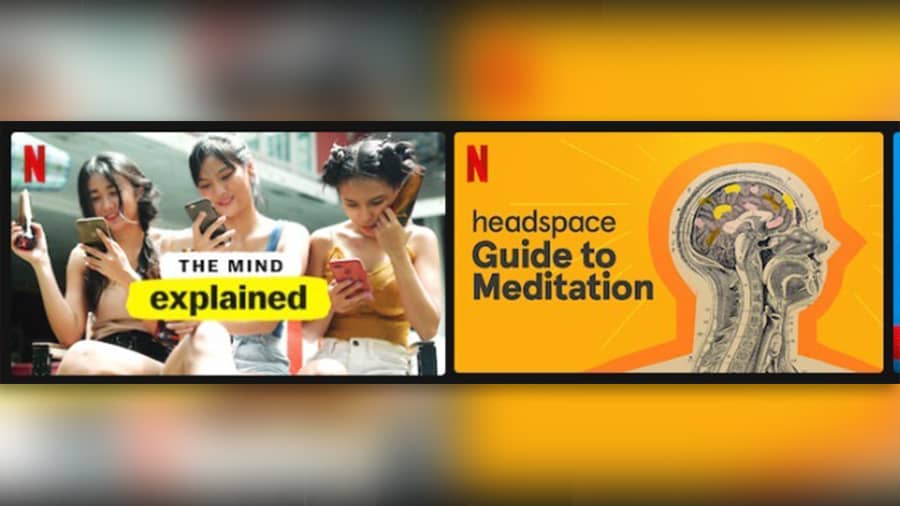Screen time has been getting a bad rep these days, even as the screen time in our lives increases in leaps and bounds. As we scroll through our days, the hours move from video conferences to Netflix, so it’s almost ironic to now find offerings from the meditation app, Headspace, streaming on this OTT platform.
Other than a Guide to Meditation and a Guide to Sleep, you can also find here a special interactive capsule, Unwind Your Mind, which seeks to address what you might be feeling in the moment. This means, when you’re unable to drift off after that hair-raising crime thriller you just watched, you can tune in to a meditation episode and unwind after a long day of screen-time.
If you want to declutter your mind, Headspace will take you through the steps and help you take a step back from all the stress. “When was the last time that you stopped, that you were still…?” asks Andy Puddicombe of Headspace in the very first episode of Guide to Meditation.
But if you want to know how your brain is reacting to all the stimulus and what really happens when you sit down to meditate, tune into another Netflix show, The Mind Explained. Narrated by Emma Stone, the first season of The Mind Explained is a documentary which seeks to explain emotions with informative and dynamic visuals. Imagine Pixar’s Inside Out but as a more scientific representation of what’s going on inside our heads.
Aside from the narrator weaving the different threads together, the episodes intersperse what experts have to say with video clips of real people and animated illustrations. Episode 5, ‘Mindfulness’, dives into the whole point of being mindful: to bring “awareness to what it is that our minds are doing.” You’re far more likely to appreciate the Headspace episodes after watching this documentary. In fact, it might even be a good idea to alternate an episode of The Mind Explained with an episode of Headspace.
The Headspace app does in fact find a mention on the ‘Mindfulness’ episode to illustrate the popularity of apps which seek to help us focus. In Season 2 of The Mind Explained (narrated by Julianne Moore), the first episode, ‘How to Focus’, begins with showing us how human beings have struggled with focusing on the task at hand, for centuries. The scenarios are taken right out of modern, tech-filled daily lives, where the major distractions on a hypothetical doomsday device are email and social media apps.
Both The Mind Explained and Headspace have narrators whose words are brought to life by animation. In the latter, there’s a childlike quality to the art, aimed at putting the audience at ease with the simplicity of it all. Because meditation is childishly simple, right? (Insert hollow laugh).
The animations in The Mind Explained focus more on the mechanisms of the brain, showing us that biology diagrams in school could have been a lot more fun than they actually were.
The key difference in the narratives are that Andy of Headspace holds a conversation with us which piques our curiosity, while Julianne Moore and Emma Stone, the narrators of The Mind Explained, seek to lucidly explain some difficult clinical concepts. Once you’ve received their gentle instructions, you might even be more keen to let Andy help you watch your breath, focus and meditate.
In fact The Mind Explained links to more than one show on Netflix. The episodes ‘Teenage Brains’ and ‘Brainwashing’ will have darker implications after you’ve watched The Social Dilemma – another documentary which combines expert-speak with real video footage and animations. But what The Social Dilemma explores is how social media apps use the knowhow of human psychology to manipulate our behaviour. This combined with what The Mind Explained has to say about a teenager’s underdeveloped frontal cortex (the rational area) and hyperactive amygdala (the emotional centre) should make us very anxious for young people for their time spent on devices.
But if you find yourself going down the rabbit hole of anxiety, tune in to Headspace. You don’t even have to watch the visuals here if you don’t want to. And there are more free mediation sessions on Netflix than there are on the app!










